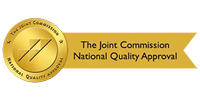The Center for Disease Control and Prevention (CDC) describe mental disorders among young people as “serious changes in the way children typically learn, behave, or handle their emotions, causing distress and problems getting through the day.”
Mental illness is highly common among school age children in the United States and is increasing at an alarming rate. Data presented from the 2020 National Survey on Drug Use and Health (NSDUH) found that an estimated 49.5% of adolescents aged 13-18 in America had AMI (any mental illness).
Of the nearly fifty percent of adolescents with AMI, approximately 22.2% had severe impairment. While there are many different mental health illness that can affect an adolescent, the three the most common diagnosed mental health disorders in school aged children are:
- Anxiety disorders: The Diagnostic and Statistical Manual of Mental Disorders, Fifth Edition (DSM-5) list five different types of anxiety disorders which include: generalized anxiety disorder (GAD), obsessive-compulsive disorder (OCD), panic disorder, post-traumatic stress disorder (PTSD) and social anxiety disorder (also known as social phobia). The National Alliance on Mental Illness (NAMI) asserts: “Anxiety disorders are a group of related conditions, each having unique symptoms. However, all anxiety disorders have one thing in common: persistent, excessive fear or worry in situations that are not threatening.” At any given time, one in eight school age children meet the clinical criteria for an anxiety disorder.
- Attention-deficit hyperactivity disorder (ADHD): The CDC describes attention deficit hyperactivity disorder (ADHD) as an inability to control impulsive behaviors, difficulty focusing and/ or paying attention, and/ or being overly active. Approximately 1 in 20 adolescents meet clinical criteria for ADHD.
- Mood disorders: The Mayo Clinic explains that mood disorders are characterized by a distortion of one’s general emotional state and/ or mood that is inconsistent with the current circumstances and interferes with one’s ability to function. Mood disorders include adjustment disorder, major depressive disorder (MDD), bipolar disorder, and premenstrual dysphoric disorder (PMDD). At any given time, 1 in 20 adolescents meet the clinical criteria for a mood disorder and up to one in four children will experience a mood disorder by their late adolescence.
Research indicates that it is typical for dormant mental health ailments to begin to manifest during adolescence. According to findings from the World Health Organization’s World Mental Health Survey Initiative half of all mental health conditions start by age 14 but most cases go undetected and untreated.
Further Information and Support
For most of us, life can be very stressful, leading us to feel emotionally charged, which can cause anxiety, panic attacks, depression, and getting stuck in a cycle of being burdened with negative thoughts. Navigating through the challenges and emotional turmoil of life can be overwhelming, but you do not have to go through it alone. Engage Treatment is a Joint Commission Accredited professional psychological practice. We specialize in treating children, teens, and young adults struggling with depression and anxiety through community-focused treatment plans that incorporate a carefully selected combination of therapeutic interventions. Our compassionate, multidisciplinary practitioners are devoted to providing the highest quality of care that helps ignite positive change and enables clients to reach optimal health and well-being. Please do not hesitate to reach out for guidance. We are happy to answer questions and provide you with any additional information. Feel free to call us at 805-497-0605 or email us at [email protected]. You are also welcomed to get in touch by filling out our contact form. We look forward to connecting and having the opportunity to discuss how we might best be able to support you.
Contact Us
Westlake Campus:
IOP Program
2625 Townsgate Road, Suite 210
Westlake Village, California 91361
Agoura Campus:
Private Therapy & Parenting Program
30300 Agoura Road, Suite 250
Agoura Hills, CA 91301
805-497-0605
805-371-4862











© 2023 Engage Treatment Program, Inc. All Rights Reserved.
LGBTQ Friendly
About
• About Engage
• Our Team
• Career Opportunities
• Individual / Family Therapy
Resources
• Community Resources
• Blog
• FAQ
• Referring Clinicians
• Privacy Policy & SMS Terms






